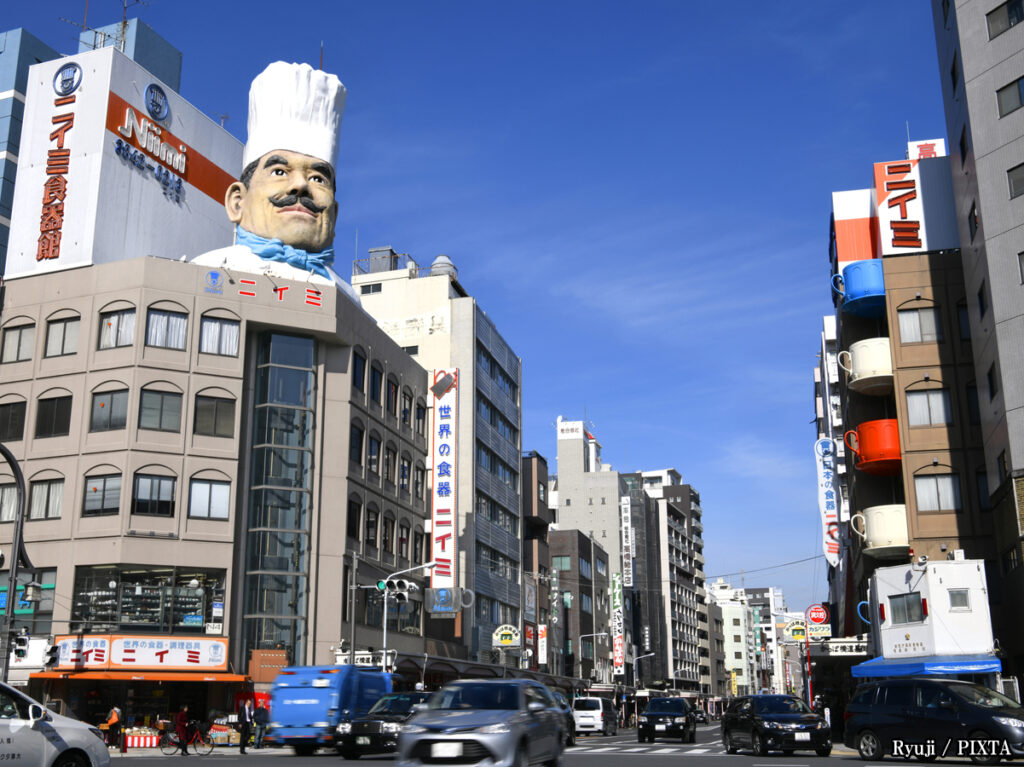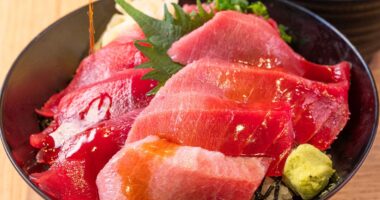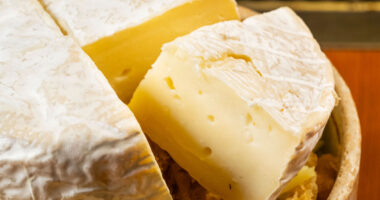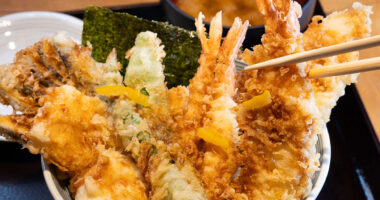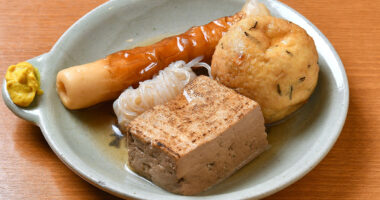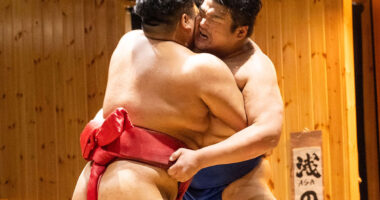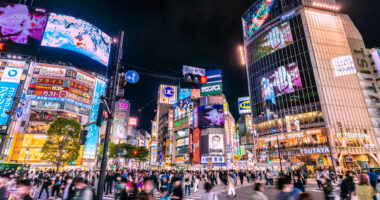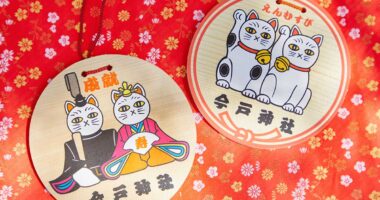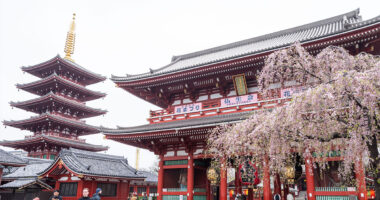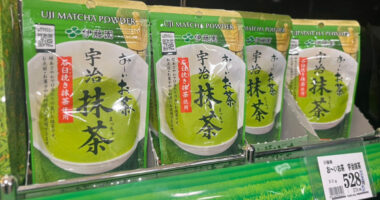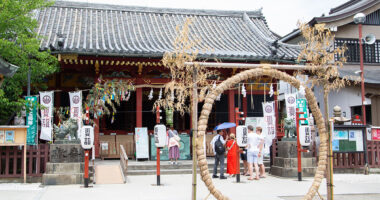Tucked between Ueno and Asakusa, Kappabashi-dori, affectionately known as “Kitchen Town,” is Tokyo’s go-to street for all things culinary. Lined with shops selling everything from handmade knives to hyper-realistic plastic food samples, it’s a goldmine for chefs, restaurant owners, and curious tourists alike. Whether you’re hunting for professional-grade tools or quirky kitchen-themed souvenirs, Kappabashi delivers a shopping experience that doubles as a deep dive into Japanese culinary culture and craftsmanship.
What is Kappabashi
Known in Japanese as Kappabashi Dōgugai (Kappabashi Tool Street)—often called Kappabashi Kitchenware Town—this multi-block stretch in Tokyo is devoted almost entirely to restaurant supplies. It began over a century ago as a supply hub for chefs and vendors from nearby Asakusa, and that professional spirit still defines the area today. You’ll find everything from ramen bowls and chopsticks to industrial ovens and refrigerated cases. These days, it’s still packed with shops selling everything from ramen bowls and chopsticks to industrial ovens and refrigeration units. For tourists, the big draw is the sheer variety of specialized tools and the famously lifelike shokuhin sanpuru (plastic food samples) lining shopfronts with uncanny detail.
What you can buy
Here is a representative sample of the variety of products you can find on Kappabashi.
Hōchō (kitchen knives)
Japanese kitchen knives are world-renowned for their precision and craftsmanship. Shops here specialize in everything from all-purpose gyūtō chef’s knives to tapered, long and thin yanagiba for slicing things like sashimi and nakiri with straight square blades often used to cut vegetables, and more. Many offer tax-free purchases and optional engraving.
Shokki (tableware)
Expect a vast assortment of ceramics and dishware: sake cups, tea sets, ramen bowls, plates, and more. Porcelain and earthenware span a wide aesthetic spectrum, from understated to intricate, with pricing just as varied.
Shikki (lacquerware)
Lacquerware has deep roots in Japanese craftsmanship and includes bowls, trays, and chopsticks that make elegant gifts or timeless additions to the table.
Shokuhin sanpuru
These hyper-realistic models of Japanese (and Western) dishes are Kappabashi’s most iconic souvenirs. Originally made for restaurant displays, they now come as novelty items too—mini ramen bowls, sushi keychains, magnets, even phone cases.
Kitchen gadgets and tools
Beyond knives, you’ll find many other tools tailored to Japanese cooking, such as ginger and wasabi graters, tofu presses, takoyaki (round octopus fritters) and tamagoyaki (rolled omelet) pans, rice molds, and more.
Hashi (chopsticks)
Entire stores are dedicated to chopsticks, ranging from basic bamboo sets to lacquered or engraved designs ideal for gifts.
Noren (doorway curtains)
Noren are short fabric dividers hung in the doorways of shops and kitchens. Some feature simple linen panels, while others display intricate hand-dyed patterns rooted in traditional Japanese design.
Restaurant supplies
Even if you’re not outfitting a business, it’s worth browsing the lanterns, uniforms, signage, and large-scale kitchen equipment. The variety offers a behind-the-scenes look at Japan’s restaurant culture.
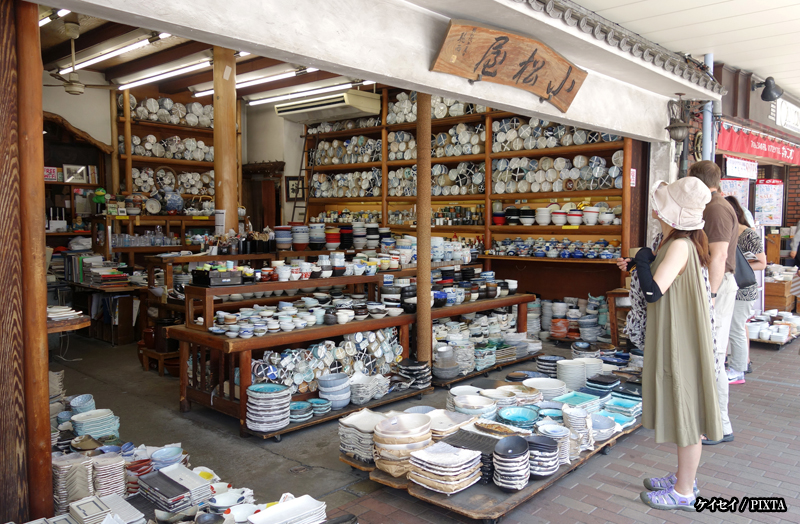
Photo for illustrative purposes
Best stores to visit
Kama-Asa Shoten
One of Kappabashi’s most respected knife shops, Kama-Asa Shoten is known for its extensive selection of high-quality Japanese blades. The knowledgeable staff often speak English and can assist with selecting the right knife or even provide engraving services.
Ganso Shokuhin Sample-ya
This famous shop specializes in Japan’s plastic food models. The detail is impressive, and their offerings make for fun, quirky souvenirs. They also occasionally host workshops where you can try your hand at making a sample yourself.
Union Co., Ltd.
Coffee lovers should not miss Union. It focuses entirely on coffee-related goods, from beans to professional brewing equipment.
Maizuru
Another excellent shop for plastic food samples, often with a slightly different assortment from Ganso Shokuhin Sample-ya. Worth a stop if you are collecting or comparing styles.
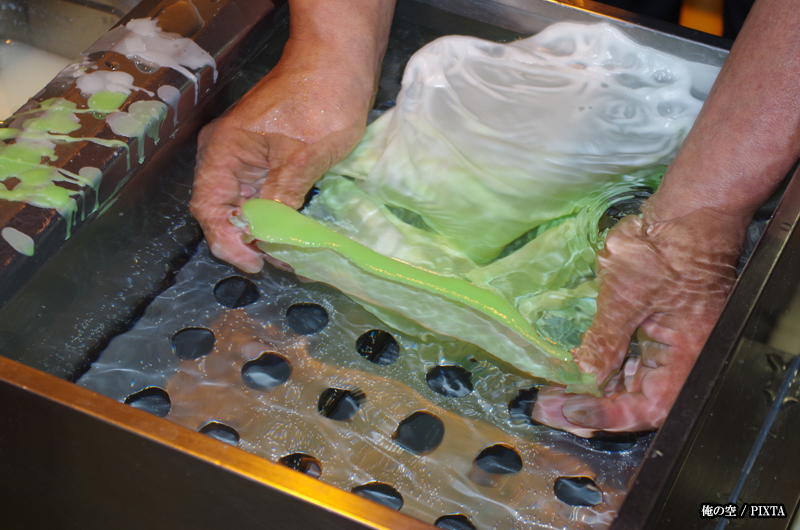
Photo for illustrative purposes
Shopping tips for foreign visitors
- Wear comfortable shoes:
The street stretches for several blocks, and you’ll likely spend a good amount of time browsing on foot. - Bring cash:
While many larger stores accept credit cards, smaller specialty shops may still be cash-only. - Look for tax-free signs:
Many stores offer tax-free purchases for tourists on orders over a certain amount (typically 5,000 JPY) but note that if you ship these items internationally, the tax exemption no longer applies as of April 2025. Make sure to bring your passport for verification. - Don’t bargain:
Prices are generally fixed, and haggling is not customary in Japanese retail stores. - Consider shipping options:
If you’re purchasing fragile or bulky items, such as knife sets or expensive tableware collections, ask about international shipping. Not all stores offer it, and the cost can be high, but it might be more practical than fitting everything in your suitcase. - Compare prices:
If you’re shopping for popular items such as knives or specific types of tableware, it’s worth checking a few stores before buying. Selection and pricing can vary noticeably. - Be mindful of luggage space:
Some items, like boxed knives or ceramic dishes, take up more space than expected. Make sure you have room in your luggage and a plan for carrying your purchases home safely.
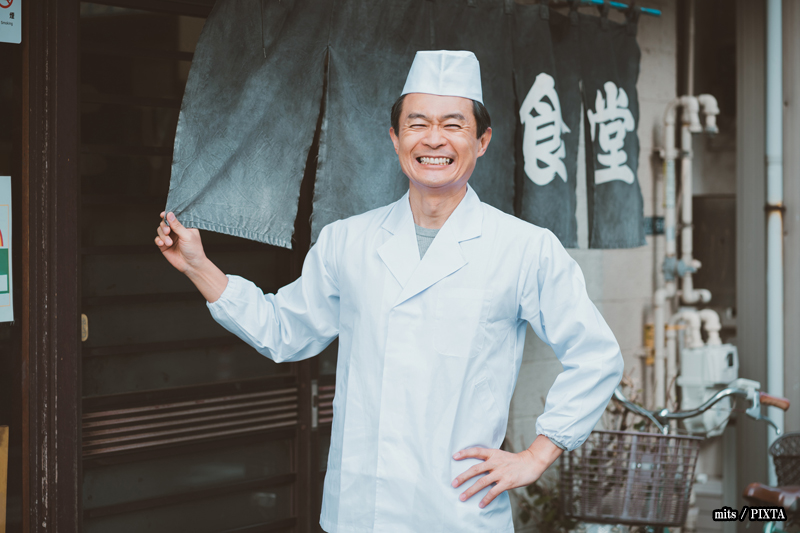
Photo for illustrative purposes
How to get there
- From Ueno Station (JR, Tokyo Metro):
About a 15-minute walk south from Ueno Station, which connects to the JR Yamanote Line, Tokyo Metro Ginza Line, and Hibiya Line. - From Asakusa Station (Tokyo Metro, Toei, and Tobu):
Roughly a 15-minute walk west from Asakusa Station, served by the Tokyo Metro Ginza Line, Toei Asakusa Line, and Tobu Skytree Line. - Closest subway stations (5-minute walk each)
- Tawaramachi Station:
Tokyo Metro Ginza Line. - Iriya Station:
Tokyo Metro Hibiya Line. - Asakusa Station (Tsukuba Express):
This is a different station from the Tokyo Metro/Toei Asakusa Station and much closer to Kappabashi.
- Tawaramachi Station:
Using Google Maps or a similar navigation app will take you to the heart of the district.
Final thought: Why Kappabashi is worth a visit
Kappabashi-dori offers more than souvenirs. It distills the precision, practicality, and quiet artistry that define Japan’s approach to food. High-quality tools, beautifully crafted tableware, and playful replicas reflect a culture that prizes both form and function. Whether you’re drawn by curiosity or intent, what lingers is a clearer sense of how function becomes culture: quietly, and by design.
